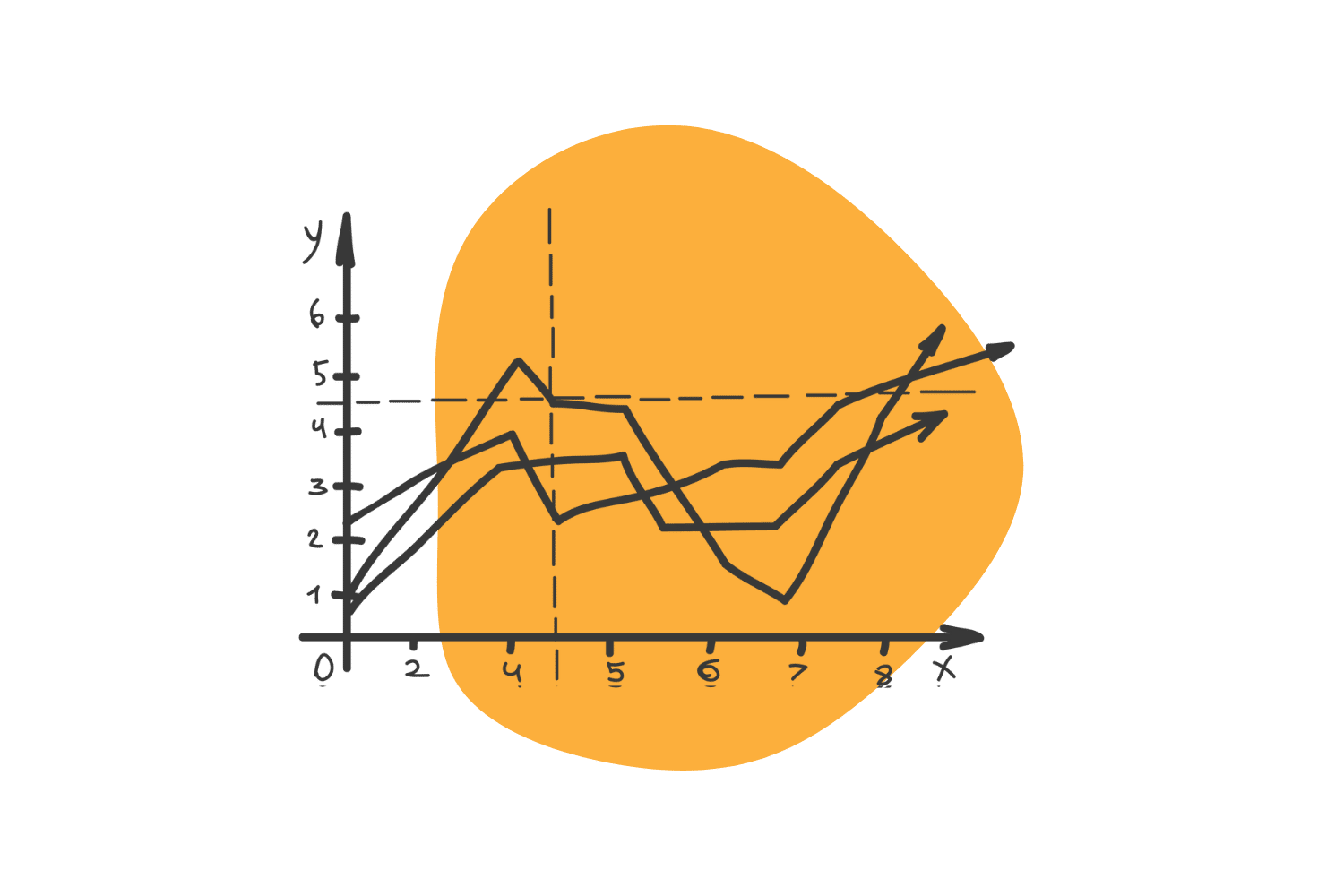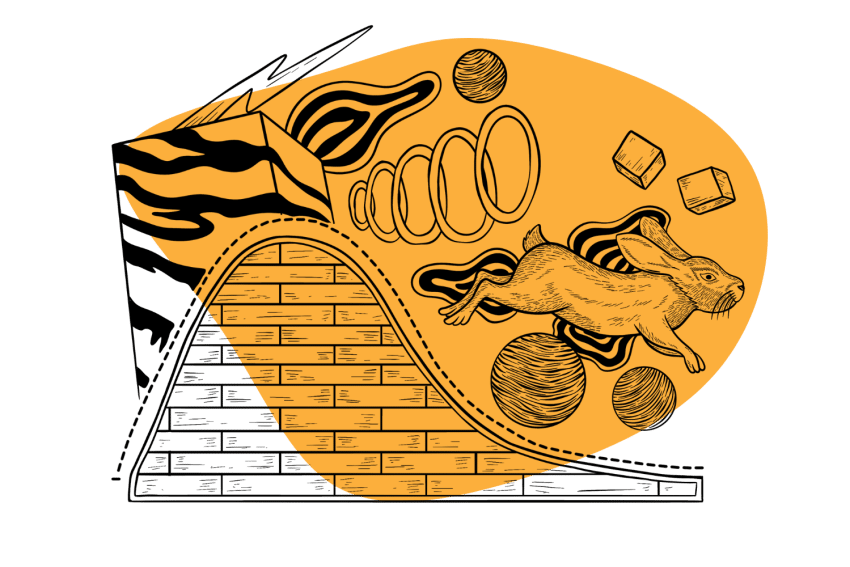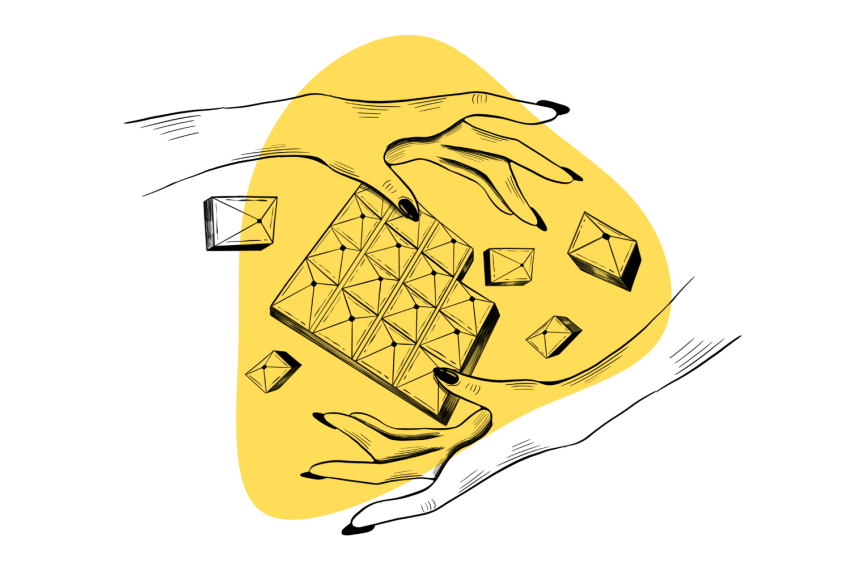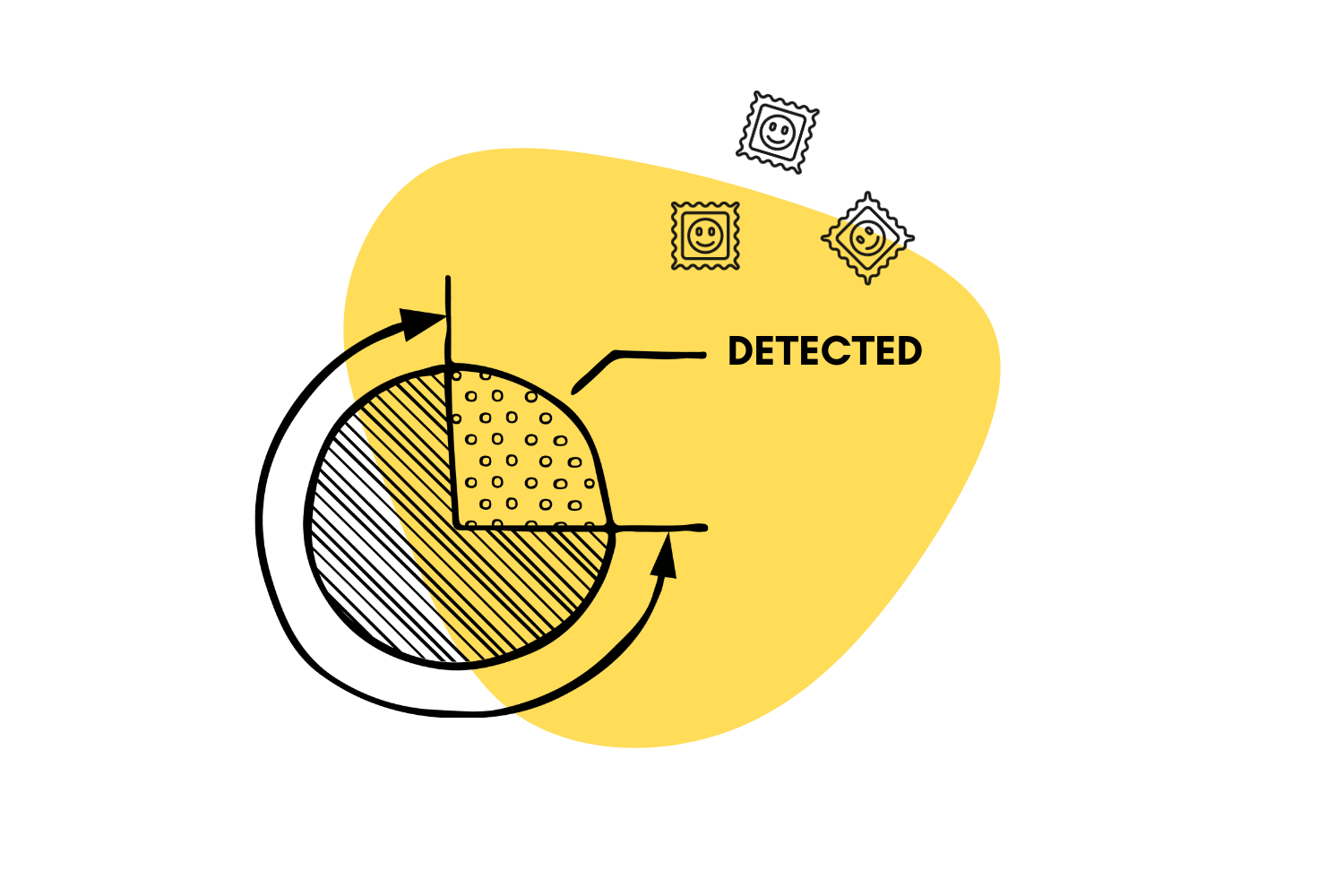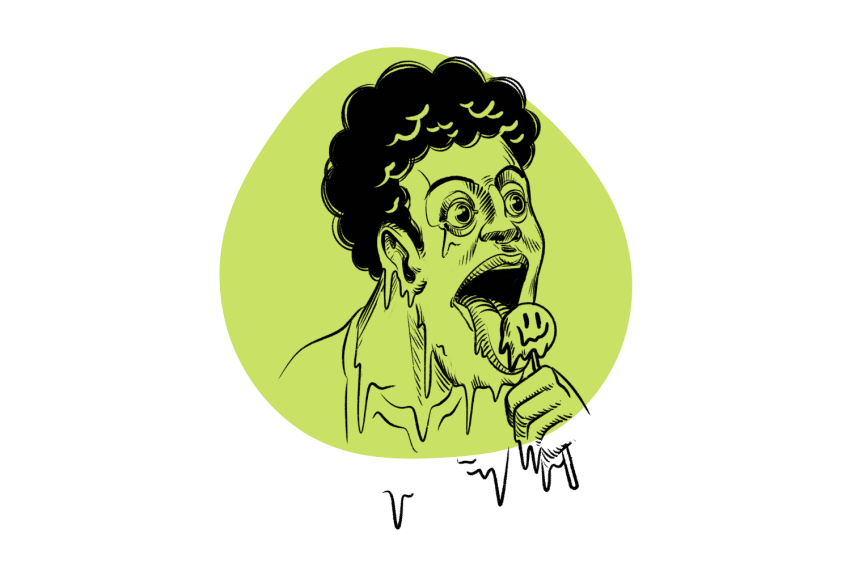LSD Blotters: What Are They & How Are They Used?
A “tab of acid“ — AKA “blotter acid” — consists of a small piece of blotter paper soaked in liquid LSD.
Lysergic acid diethylamide — more commonly referred to as LSD or acid — is one of the most popular psychedelic drugs in existence. It’s the third most used illegal substance behind cannabis and cocaine.
Anyone who has had the chance to take LSD or has started to do research on dosing has probably heard of blotters (also called blotter paper).
In this guide, you’ll learn what blotters are, how to take them safely, what the dosage looks like, and what steps you should take to ensure a safe and positive experience overall.
We’ll also touch on the concept of LSD blotter art.
What Is an LSD Blotter?
An LSD blotter is a small tab of absorbent paper onto which liquid LSD has been soaked.
Blotter paper is one of the most common methods of dosing for LSD for a few reasons:
- It makes dosing LSD much safer and more accurate
- Blotter paper is easier to store and distribute
- Blotter paper has a long shelf-life
Blotter paper also makes storing LSD more straightforward, even for long periods.
Blotters are usually made into large printed sheets with distinct imagery, called LSD blotter art. This acts like the branding for that particular batch of acid and its manufacturer.
Each sheet is 7.5 x 7.5 inches and contains 900 perforated 1/4 inch squares (called tabs). Each of these individual squares contains a piece of the larger artwork, along with a dose ranging from 80–200 mcg of LSD each (depending on the purity of the LSD used to make the blotters and the absorbency of the blotter paper).
How Do You Take A Tab of Acid?
Blotters (tabs) are the most popular dosing method for using LSD because of how easy they are to use. A newer method called LSD gel tabs follows a similar approach and has become more popular in recent years as well.
Most users drop a single tab or a part of a tab under the tongue and hold it there for 10 minutes or so.
Some users swear by holding the tab sublingually for 45 minutes, but anecdotal evidence suggests no difference in effects after just 10 or 15 minutes.
After the first 10 minutes, swallow the blotter or take it out of your mouth and throw it out.
Again, there are no reported differences in effects between removing the blotter paper and swallowing it.
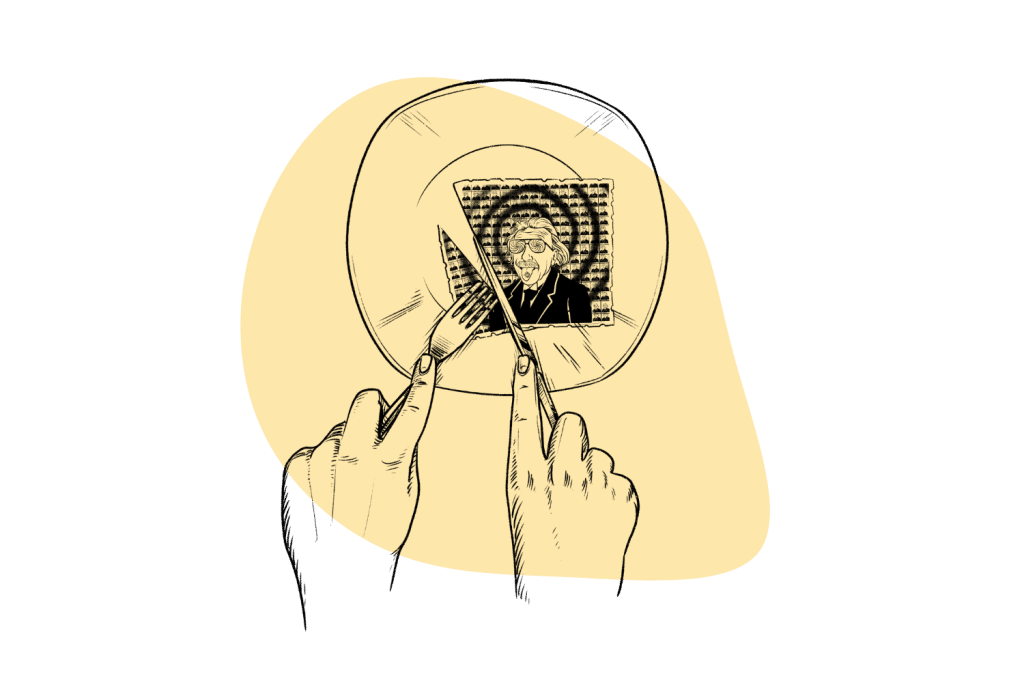
You can also cut each tab into smaller pieces using a sharp knife. Common denominations include half or a quarter of a tab.
For microdosing LSD, tabs should be cut into 9 even squares. The standard microdose is about 10% of a standard dose. You can choose to cut the tabs into 10 squares to be more accurate, but 9 is close enough and is much easier to divide evenly.
What Do Blotters Taste Like?
LSD blotters shouldn’t taste like anything. Pure LSD doesn’t have any taste or smell. If you notice a bitter or unpleasant flavor, or you notice that the area of your mouth where you’re keeping the blotter paper feels tingly or numb, chances are your blotter doesn’t contain pure LSD.
If you notice a clear taste from your blotter, take the tab out immediately. It could contain a compound called 25I-NBOMe, which has similar effects as acid but is much more dangerous.
You can avoid this issue altogether by testing a small piece of your blotter square with a reagent test kit prior to taking it (highly recommended).
Related: 7 Most Common LSD Myths & Misconceptions [Debunked].
How to Take LSD Blotters Safely
LSD is generally considered a safe substance if it’s used properly. Taking the correct dose and being prepared for your trip are the best ways to ensure you have a positive trip.
Preparing yourself mentally and physically and ensuring you have the right “set and setting” are crucial for avoiding bad trips and negative experiences.

Here are some tips for using LSD blotters safely:
- Always test a sample before you take it. Use the Ehrlich and Hoffmann reagents
- Only take one tab if this is your first experience with LSD. Even if the effects take a long time to kick in, be patient and don’t double-dose.
- Only use LSD if you’re with people you trust (and willing to remain sober throughout the journey).
- Only take LSD if you’re in the right mindset (if you’re feeling depressed, worried, or anxious, it’s not wise to use LSD).
- Only take acid if you’re in a safe and familiar location.
- Clear your schedule for the day before you begin; it’s not a good idea to have important plans later, even if the effects are supposed to be worn off in time.
- Never take acid if you or a close family member have been diagnosed with psychosis or schizophrenia.
What’s the Proper Dosage When Taking LSD Blotters?
Bottom Line: One dose of LSD is equal to one full tab of acid. The potency of each tab can vary from one batch to the next.
LSD is extremely potent. It’s one of the few psychedelics active at a sub-milligram dose. This is why LSD is measured in micrograms rather than milligrams or grams. The threshold dose (the minimum amount needed for psychoactive effects) is only about 50 micrograms.
A standard LSD dose is around 80–100 micrograms. This dose will supply a somewhat potent psychedelic experience without too much risk of being overwhelming.
Double-check the potency of the DXM you’re using, and look for the addition of other compounds such as acetaminophen which can cause severe liver-toxic side-effects at this dose.
A single tab of LSD blotter paper is designed to contain roughly 100 micrograms each, but the actual dose can vary from about 80 to 140 mcg. It’s impossible to know the exact potency of the LSD tab without high-tech analysis equipment. This is why it helps to know from the source of the LSD how powerful it is based on others who have already tried a sample from the current batch.
All tabs that come from an individual LSD blotter art paper should have roughly the same potency.
Let’s break down the doses of LSD blotters:
- Microdose — Anything under 20 mcg (most aim for 10% of the standard psychoactive dose). This works out to about 10% of a blotter square.
- Threshold dose — The official threshold is listed at 50 mcg, but this can vary depending on the users size and sensitivity to LSD. This can range from 20 to 60 mcg.
- Standard psychoactive dose — The usual dose of LSD is between 80 and 100 mcg (one full tab of LSD).
- Heroic dose — This dose is not recommended. Anything over 200 mcg is considered a heroic dose. The effects of LSD at this dose are comparable to DMT.
How to Microdose LSD Using Blotters
Microdosing is very straightforward when using blotters. Since the standard micro dosing regimen calls for about 10% of the standard dose, and one standard dose is a full tab of acid — a microdose is achieved by cutting the tab into 10 even doses.
For the sake of simplicity, most people cut their tabs into 9 even squares by making two cuts vertically and two horizontally.
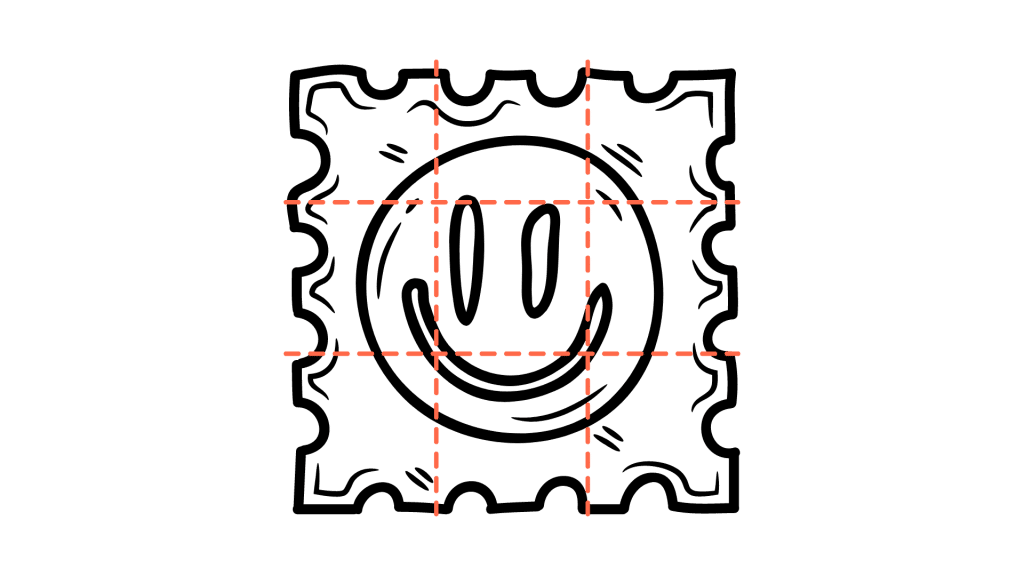
You can also make microdoses by infusing a tab of acid into some water and splitting it into ten even doses.
Why You Should Always Test Your LSD Blotters
Even if you take the ideal dose, you can have a bad or potentially dangerous experience if the blotter doesn’t contain pure LSD. Other hallucinogens that mimic the effects of LSD are sometimes sold without warning.
The only substances potent enough to be used as “fake LSD” are other lysergamides (which aren’t usually an issue) or NBOMes (these compounds are highly dangerous).
Because of the risk of NBOMe contamination, testing a small piece of your LSD is crucial to using it safely.
You can pick up simple LSD testing kits from places like Test Kit Plus. You should look for two tests — The Ehrlich reagent and Hoffmann Reagent.
It’s wise to use at least two individual tests for any substance you’re testing. Here’s what you should expect if your sample contains LSD:
- Ehrlich — Should turn purple
- Hoffmann — Should turn blue
If there’s no color change at all, your sample doesn’t contain LSD and should not be used.
In some cases, the Ehrlich reagent may turn pink. If this happens, it’s likely your tab contains a related lysergamide rather than LSD. These compounds are safe and often used as alternatives to LSD. However, the Hoffmann reagent should still turn blue. If not, don’t take it.
The Importance of Set & Setting
The last part of your preparation should be to perfect both set and setting.
“Set” refers to your mindset going into the LSD experience. LSD can help you access thoughts and feelings that you have suppressed or were entirely unaware of, so negative feelings about the drug or your trip could actually lead you to have a bad trip.
If you find yourself nervous about taking LSD, it’s best to step back and wait until you can honestly say you’re ready for the experience and you’re comfortable letting go and seeing where the drug takes you. Many people find that it’s helpful to set intentions for their trip by writing them down or saying them out loud before taking the blotter.
Setting refers to the environment and people you’re with. It’s just as important to get this right for a positive and safe experience.
Putting yourself in a comfortable and familiar place will help avoid negative feelings during the trip that can make it go bad. Being in a locked room in a familiar place that’s free of interruptions is best for most users. Keeping a sober trip sitter who is a trusted friend or family member nearby is also helpful. Just be sure you won’t feel judged while tripping around your sitter.
How Long Does It Take for LSD Blotters to Kick In? How Long Do Blotters Last?
Once you ensure that your set and setting are right for a positive experience and you take your blotter, you can expect the effects to start to kick in after about 30 minutes.
By two hours into your trip, you will have hit the peak effects, which will start to subside by around four hours. At this point, the experience will feel like waves hitting you, making your trip more and less intense, with a gradual decline in effects.
By six or seven hours, you’ll be in the comedown phase, and some people will feel mostly back to normal by this point.
Ten hours after dosing is the standard time when users will feel that the effects have entirely worn off.
You may experience lasting changes in your mood and awareness lasting a few days or even a few weeks after the experience. This is referred to as the afterglow.
Related: How Long Does LSD Last?
What Forms Of LSD Are There?
The most common form of LSD is blotter paper. The reason for this comes down to the fact that it’s the easiest way to manufacture, store, distribute, and use LSD. LSD gel tabs are also easy to use and store but are a little harder to manufacture.
LSD is available in six different forms:
1. Liquid LSD
Liquid LSD has the shortest shelf life and is the most inconvenient form to carry. Most people choose to drop the liquid LSD onto blotter paper to dry up the liquid and make dosing easier.
The problem with using liquid LSD is that it carries a higher risk of taking too much. Just one drop too many can produce a significantly different experience.
Taking too much LSD isn’t deadly, but it can still be very uncomfortable. Since the effects of LSD last so long, this is definitely something you’ll want to avoid.
A safer way to use liquid LSD is to dilute it prior to use. You can do this by placing drops into a bottle of water.
2. LSD Blotters
Blotters are the most common way to take LSD, as dosing is simple and they are easy to store and transport.
You can take blotters by placing them under the tongue or dripping them into a bottle of water.
3. LSD Microdots
Microdots are usually small pills that contain a single grain of crystallized LSD. Microdots are easy to consume and carry, but they are far less popular now than they were in the 1970s, when LSD use was at an all-time high.
4. LSD Gel Tabs
LSD gel tabs are similar to blotters but use a gelatin base instead. You can take them the same way but hold them under the tongue for a few minutes before you swallow.
It’s thought that gel tabs have a higher bioavailability than blotter tabs, but in practice, both offer virtually identical experiences.
5. LSD-Infused Edibles
Liquid LSD can also be dropped onto just about any food product as well. A common go-to here is LSD-infused granola. Drop the acid into the granola, mix it up evenly, give it about an hour to disperse throughout, and voila!
Avoid adding LSD to hot foods. The heat is going to destroy the active ingredients before you get a chance to ingest them.
Also note, this method is not ideal for splitting doses evenly. Some parts may contain much more acid than others using this method.
6. LSD Water
LSD can be diffused into the water by dropping one or more blotters or drops of liquid LSD into a freshwater bottle.
This is a good way to take microdoses of LSD or to share tabs with multiple people.
For example, if you have five tabs (blotters) of acid and 6 people, you can split the dose evenly by first infusing them into some water and then splitting the water into 6 equal doses.
LSD Alternatives
LSD is just one of many compounds classified as lysergamide psychedelics. It’s the most common by far, but you may be surprised to hear it isn’t even the most potent of the bunch.
Each of the lysergamides is going to offer similar effects and are active at comparable doses. You can think of the subtle differences between each one as you would for different strains of cannabis or magic mushrooms. Some are a little more stimulating, sedating, or visual than others, but the general effects are going to be the same.
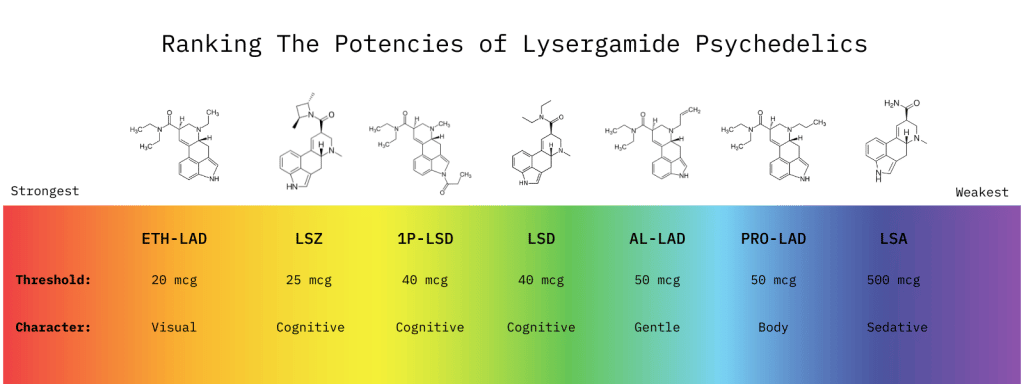
All lysergamides are available in the same blotter paper forms as LSD, with the exception of LSA, which requires a higher dose and is therefore not appropriate in blotter form.
Thanks to research from the likes of Dr. David E. Nichols, we know that each of these lysergamides shares a similar safety profile as LSD.
The most common LSD alternatives include:
- 1P-LSD — A prodrug of LSD. It’s popular in Canada as a legal alternative to LSD.
- 1V-LSD — Another prodrug of LSD that’s allegedly legal in Germany.
- ETH-LAD — Considered the most potent lysergamides known. Notably, strong visual component.
- AL-LAD — A mild LSD alternative. Often suggested as “beginner LSD.”
- PRO-LAD — An LSD alternative with a stronger impact on the body than other lysergamides.
- LSZ — The second strongest lysergamides currently known. High cognitive focus.
- ALD 52 — An isomer of 1P-LSD with similar effects and potency.
Other alternatives include psilocybin (magic mushrooms), LSA (morning glory), N,N,DMT, bufo toad venom (5-MeO-DMT), mescaline (San Pedro or Peyote), 2C-X substances (2C-B, 2C-E, 2C-I, etc.), or any of the other tryptamine or phenethylamine psychedelics.
Will I Fail A Drug Test After Taking a Tab of LSD?
If you take LSD within 24 hours of a blood, urine, or saliva-based drug test, it’s possible (but unlikely) that you’ll test positive for LSD.
Hair tests can detect LSD for much longer (up to 90 days) — however, they’re rarely used and aren’t as accurate as they’re often made out to be.
The bottom line is that technically you could fail a drug test after recently taking LSD, but most standard drug tests don’t even look for it. If you’re given a standard 12-panel test, LSD isn’t likely to be on the list of substances being scanned for and, therefore, won’t show up on the results.
Also see: What Are the Long-Term Effects of LSD?
Wrapping Up: Taking LSD Blotters Safely
LSD blotters offer a simple way of taking the most popular psychedelic drug. They’re small bits of absorbent, perforated paper that have soaked up liquid LSD, making dosing simple. Blotters are easy to transport and can be stored for long periods without the risk of LSD degradation.
Taking blotters is as simple as dropping them under your tongue and holding them sublingually for about 15 minutes. Effects will kick in around 30 minutes, and peak effects typically hit by around two hours.
Taking blotters safely means testing them to ensure they contain only pure LSD, getting the dose right for you, and being prepared for a positive trip experience by nailing down set and setting.

